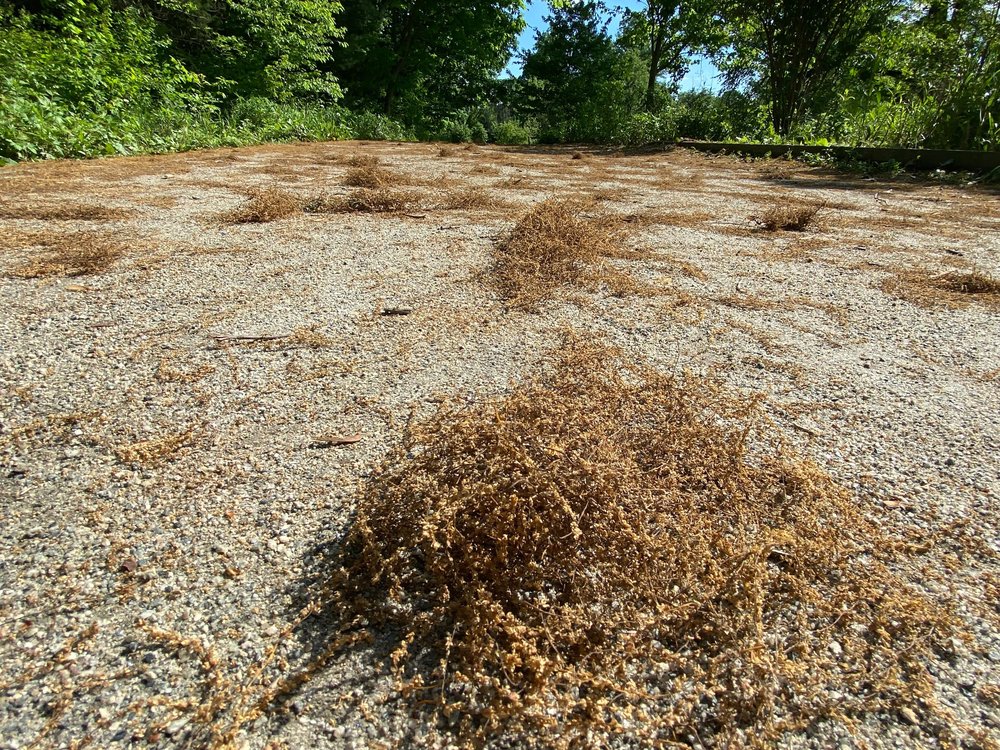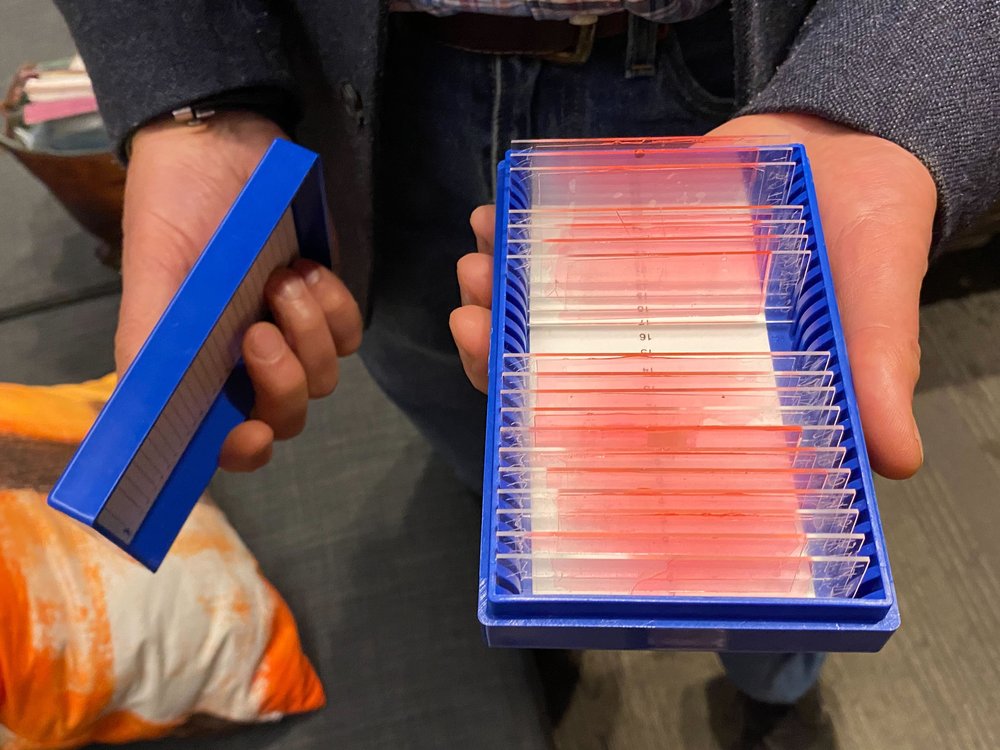Is pollen relief on the horizon in NYC? Don't hold your breath just yet.
May 8, 2025, 1 p.m.
Or maybe do hold your breath — and blame catkins.

If you're sneezing or sniffling while reading this, you're not alone.
Pollen is in the air in New York City, and while the levels are currently declining due to recent rain and many trees losing their flowers, the reprieve will likely be temporary.
"We'll get another peak toward the end of May," said Dr. Guy Robinson, who runs the city's only official pollen monitoring station, at Fordham University's Lincoln Center campus in Manhattan.
He spoke with WNYC "Morning Edition" host Michael Hill on Thursday and detailed how he tracks airborne allergens causing New Yorkers' eyes to water. Below is a lightly edited transcript of the conversation.
Michael Hill: Doctor, thanks for coming to our studios. You must be busy this time of year.
Dr. Guy Robinson: It has been busy. I was unfortunately having to go out of town toward the end of last month and it just coincided with some of the highest pollen peaks we've had in a few years.
How are you the only person doing this work in this city?
Well, it's hard to get people to do this. It takes rather a long time to learn.
Quad AI [the American Academy of Allergy, Asthma and Immunology] requires a certification, which is quite reasonable to be sure that people are actually counting and reporting the pollen data correctly. That takes a while to learn and to be able to pass their test.
Is this a paid position, or do you volunteer to do this?
I volunteer to do it. In Europe, they have people who are paid often by government agencies, but here in the United States it's almost entirely voluntary.
So you won't get rich doing this?
No, that's one thing I warn students when I begin training them. If you enjoy doing it, that's the best thing because you're not gonna get paid very much.
So walk us through the process, just how you do the pollen count.
The sampling equipment is called a Burkard sampler. It produces a strip of tape on which the pollen is adhered. It's got like a kind of adhesive on it, that makes one turn in seven days.
So you take the tape off and cut it up into seven strips. That'll make seven microscope slides, one for each 24 hours that have passed. It does need to be stained and prepared with a cover slip and everything. Then it can be put on a microscope and the pollen can be counted.

What do you see when you look at those strips through a microscope?
Well, you see the pollen grains, and you can identify them by their shapes, their sizes, then their particular surface sculpturing. They're about 25 microns in size, which is about maybe a quarter to a fifth of a human hair.
Are pollen levels getting higher in New York City?
Well, that's not clear yet.
It is probably true, if you look at all of the pollen monitoring stations throughout North America, you'll probably find — in fact, we have found — that there are there significant increases in pollen over, let's say, the last two decades. That's not been the case with our two stations here, the New York City and the Armonk station [in Westchester County]. We're not yet seeing earlier onset of pollen season and extending later into the fall, which many, many places in the U.S. are.
Why do you think that is?
Well, we're not the only outlier in this region. There are a couple places in I think Texas and California that also are not seeing increases, but most of them are. And obviously we don't know for sure if that's correlating with increased average temperatures — it could also be with increased levels of carbon dioxide because plants have a tendency to grow more when carbon dioxide levels are higher, and that extends to their pollen production.
What's the situation like right now, pollen-wise in the city?
It's declining at the moment because we've had quite a bit of rain. Even though it's still May, which is typically very high [in pollen], it's been declining the last few days I've looked. That may be because the big [sources] — the birches, oaks and sycamores — are starting to lose their flowers.
But we'll still be getting quite a bit for the next few days. Then it'll decline a bit more, and then we'll get another peak toward the end of May.
What are the main offenders here for triggering allergies?
In New York City, it's mostly trees. Now these are mostly flowering trees, but they're not the kind of flowers that you tend to notice. The big offenders are oak, birch, ash, sycamore. Particularly in the city, sycamore is planted a lot as street trees and park trees. It's otherwise more commonly known as London plane.
There's several others I could list, but they're trees that produce what we call catkins. These are flowers, but they're multiple flowers. They're like tassels. You'll see piles of these catkins have fallen from the trees in the last few days, and they often pile up at the edges of the streets and the gutters. There could be 50 to 100 flowers on each catkin, and they're falling by the thousands right now.
Can't stop sneezing? NYC is in peak pollen season.